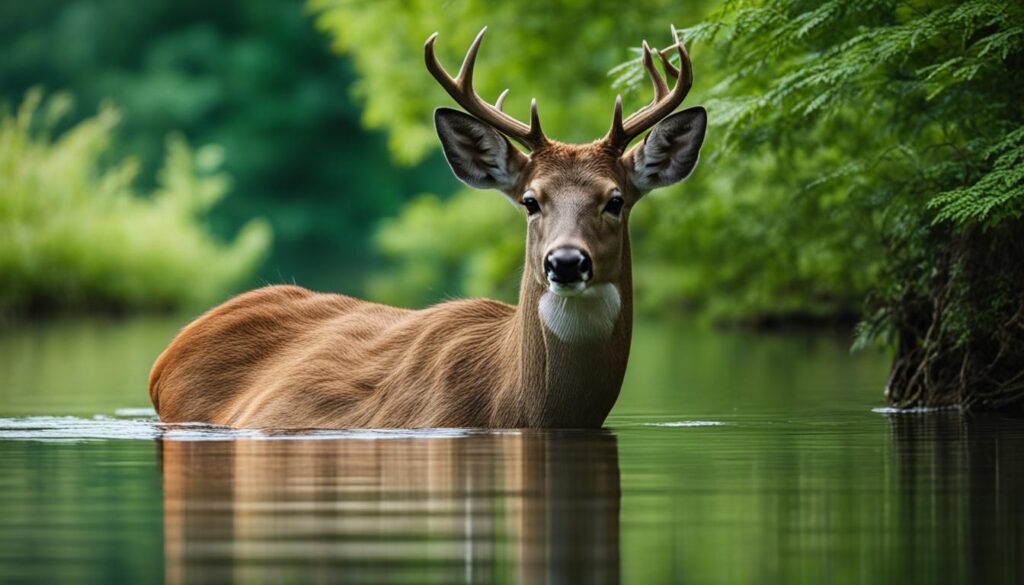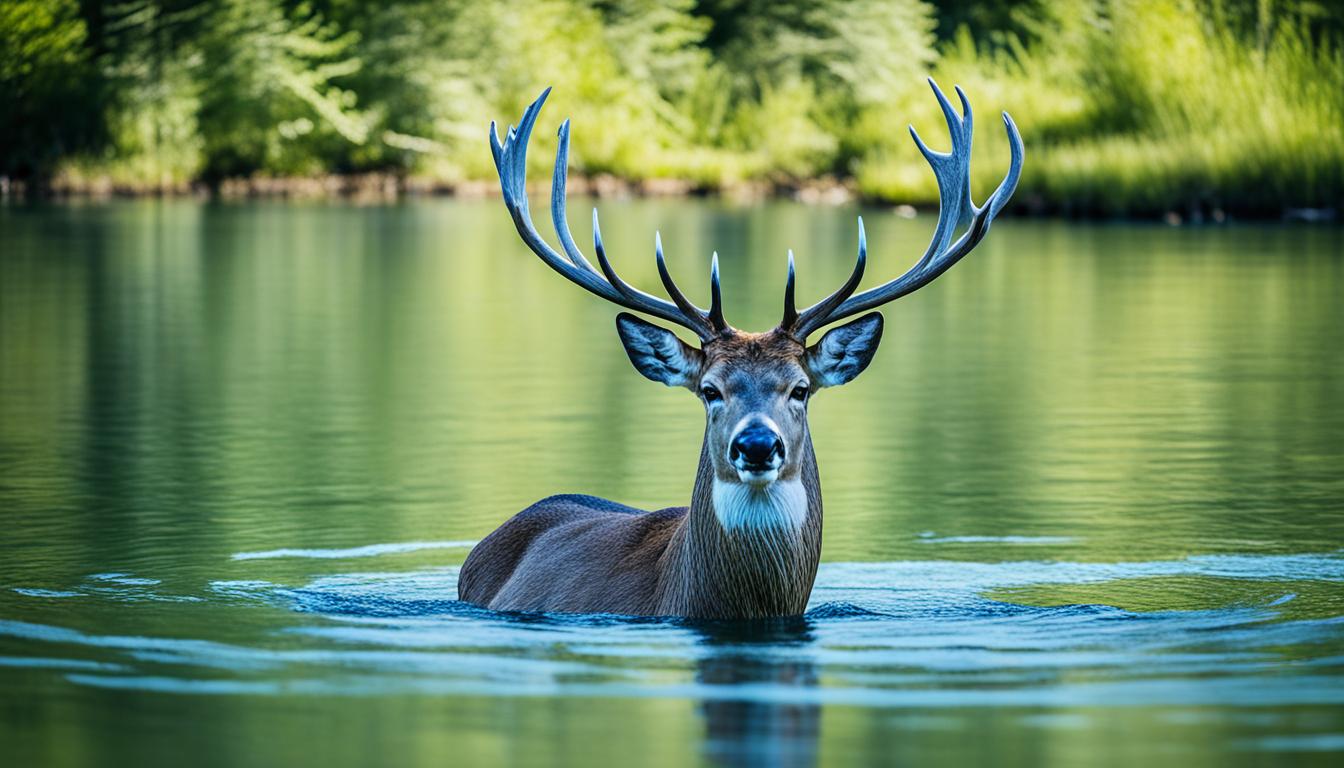Have you ever wondered if deer can swim? Well, you might be surprised to learn that they not only can swim but also possess remarkable aquatic abilities! Let’s dive into the fascinating world of deer and explore their water adaptation skills.
Content Highlights
ToggleKey Takeaways:
- Deer, including the North American White-tailed Deer, are capable of swimming long distances, including crossing rivers over half a mile wide.
- Deer have a unique two-layered coat that helps them stay safe and insulated in the water.
- Their powerful hind legs provide the needed propulsion for efficient swimming.
- Fear, seeking safety, and habitat exploration influence their decision to swim.
- Deer typically swim when it is necessary for their safety or sustenance.
Factors Influencing Deer's Decision to Swim
When it comes to deer and their interaction with water, several factors influence their decision to take the plunge. Whether it’s crossing rivers or exploring different habitats, deer have fascinating behavioral patterns that drive their swimming behavior.
“Deer will often take to the water when they are frightened and seeking safety.”
One significant reason for deer to swim is their instinctive response to fear. When faced with danger, deer instinctively seek safety, and water bodies such as rivers and lakes provide a potential escape route. Crossing over water can help them evade predators and find refuge on the other side.
Pregnant females, in particular, have been observed swimming to reach small islands where they can safely give birth and protect their newborn fawns from potential threats. This strategic move ensures the survival and well-being of the next generation.
Adult deer have the energy and endurance to swim long distances without risking drowning. Their muscular bodies and powerful legs allow them to propel themselves through the water efficiently, making them adaptable to river crossings and even ocean swims.
However, it’s crucial to note that baby deer, known as fawns, may struggle with swimming long distances. Fawns tire easily and can become dangerously exhausted, making them more vulnerable to predation. As a result, they are more likely to rely on their mothers to carry them through water bodies when necessary.
Deer are also known to seek out swampy areas for dense vegetation and abundant food. These habitats serve as ideal grazing grounds, providing deer with a stable food source and ample cover. During hunting season, when deer are more cautious of their surroundings, they may spend more time in swamps to avoid potential danger from hunters.
To summarize, fear, seeking safety, and habitat exploration are key factors that influence when and why deer swim. Understanding these behaviors contributes to our knowledge of the remarkable adaptability of these graceful creatures in various environments.
Factors Influencing Deer's Decision to Swim
| Factors | Reasons |
|---|---|
| Fear and Seeking Safety | Deer take to the water to escape predators and find refuge. |
| Pregnancy and Protection | Pregnant females swim to reach islands for safe birthing and fawn protection. |
| Adult Endurance | Adult deer have the energy and physical ability to swim long distances. |
| Fawn Vulnerability | Fawns tire easily, relying on their mothers to carry them through water bodies. |
| Habitat Exploration | Deer seek out swampy areas for abundant food and dense vegetation. |

Examples of Deer Swimming Distances
Recent research has documented numerous instances of deer showcasing their natural instincts and remarkable swimming abilities by covering long distances in water bodies. In a study conducted on GPS-collared deer, it was observed that the majority of these majestic creatures chose not to cross the Wisconsin River. However, one adult doe defied the odds and swam an impressive distance of approximately 400 yards.
Another study in Maryland focused on the swimming behavior of collared adult does. Out of the 12 deer observed, two of them successfully crossed narrow tidal creeks. The widest water crossing recorded during this study was around 116 yards, further highlighting the resilience and adaptability of these creatures when it comes to traversing aquatic environments.
In the state of Minnesota, a GPS-collared fawn displayed incredible swimming capabilities by crossing a moderate-sized lake. It is noteworthy that during this journey, the swimming distance covered by the fawn ranged from 500 to an astonishing 1,100 yards. These remarkable examples not only showcase the innate instincts of deer to navigate water bodies but also emphasize their ability to overcome physical challenges.
- California Deer Hunting Guide: Seasons, Rules, Permits, and More - 26 June 2024
- Arkansas Deer Season 2024 [Schedules, Licenses, Bag Limits & More!] - 26 June 2024
- 2024 Arizona Deer Season New Dates & Rules! - 25 June 2024




